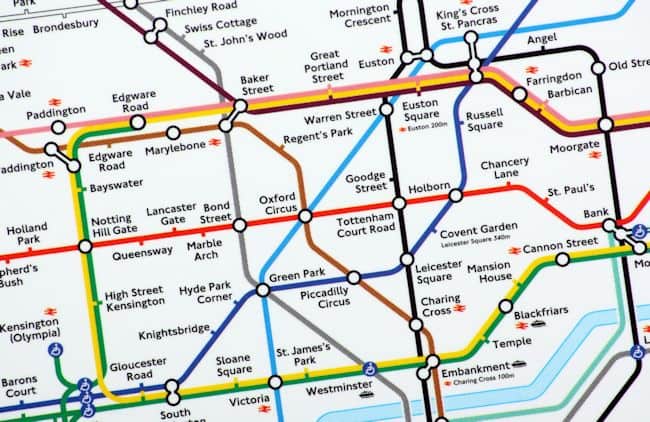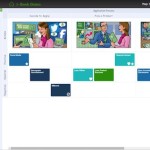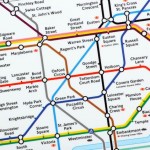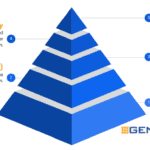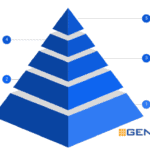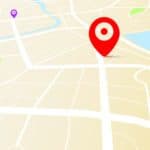This Practical Guide to B2B Customer Journey Mapping is the definitive resource for anyone looking to improve their B2B business’s customer experience.
It provides a comprehensive overview of how to map the customer journey and understand the customer experience covering everything from the basics of customer journey mapping to more advanced topics such as how to run the journey mapping workshop.
With this guide, you will be able to create a customer journey map that is tailored to your business’s needs and improve your customer experience.

Why you need a B2B Customer Journey Map
The goal of every customer journey map is to document the journey that a customer takes when interacting with the organisation so that it can be used to understand and continuously improve the journey over time.
Understanding this journey is not nearly as obvious as it sounds.
While you may think everyone in the organisation has a clear and consistent view of the entire set of interactions a customer experiences, they almost certainly do not.
Many times attendees at my journey mapping workshops react with surprise when learning what happens in another part of the organisation. Staff understand the part of journey that relates directly to their own area of responsibility but often not the overall journey.
This can lead to problems.
What might seem to be a very efficient way of running a process at the local organisational level can cause issues (lost sales, higher costs, annoyance, etc.) for the customer and the organisation in a broader context.
For instance, while Accounts may be processing bad debts very efficiently – it may not be taking into account clients with multiple products. A poor experience with Accounts may cause a customer to take their non-bad debt business elsewhere.
The Difference Between B2B Journey maps and B2C Journey Maps
B2B and B2C maps are very different because the way B2B and B2C organisations interact with their clients is so different.
| Area | B2B | B2C |
|---|---|---|
| Decision making unit | Multiple people at different parts of the organisation will have an input to the buying/re-buying decision. Some may not be visible to the sales team but must be taken into account in the customer journey, e.g. IT and Legal approvals. | Typically only one or two people form the buying unit and most of the time all will be visible in the process. |
| Implementation | The people you contact directly can change dramatically after the sale is made and handed over to the implementation team. | Stay in contact with the same group. |
| On-going Execution | There can be dozens or even hundreds of people involved on the customer side. Each can have different requirements and expectations. | Typically only one or two people are involved. |
| Order Value | Typically, a relatively smaller number of much larger orders. Each journey is more important. | Typically, larger numbers of much smaller orders. Each individual journey is less important. |
| Number of Steps | Many more steps to the buying journey. Because B2B orders are typically much larger there are often many more steps to the buying journey: multiple sales discussions, evaluations, etc The buying journey is complex and may loop back on itself. | The customer journey is relatively straightforward: awareness, etc. |
| Consistency of Contacts | Due to the length of the buying process staff involved can change mid-process due to role changes or company moves, requiring the organisation to re-do portions of the customer journey. | Always the same people. |
The B2B Customer Journey Map Steps
Due to the larger investments and multiple decision makers, B2B customer journeys are typically more complex and formal than B2C journeys
When designing your B2B customer journey map you should ensure you capture at least the following steps:
1. Problem Identification, Prioritisation and Budget
Not only will your product/service need to solve a specific and acknowledged need the customer has, it must also also be a need with a high priority and typically have an approved budget.
2. Needs Definition
This could be as simple a one page summary, or a thousand page needs assessment.
3. Solution and Vendor Identification
Similar to the Awareness / Consideration phases of B2C customer journey but can be multiple parallel sets of meetings and documentation.
4. Vendor Selection
This will often be a more formal process than B2C decisions with multiple customer contacts and approvals required.
This is the equivalent to the Decision phase of a B2C customer journey.
5. Implementation
Many B2B sales will require an extensive implementation process so this should be actively considered in your journey map.
6. Adoption
Successful adoption of the product/service will often require substantial change management, training, etc for significant numbers of staff.
Failure to include this element in the journey map can lead to rapid turnover of the contract.
7. Renewal
Failure to pre-plan and act on the Renewal stage can lead to high customer attrition rates.
Example B2B Journey Maps
The exact content of your journey map will be different based on exactly what you business does and how it operates but here are a couple of examples of B2B customer journey maps.
Notice how complex both of these journey maps are compared to a B2C customer journey map


How to Create a B2B Customer Journey Map
Before running your workshop you need to ensure that you have completed the following pre-work
Step 1: Identify and Prioritise Customer Segments
It is very likely that your organisation serves more than one customer segment. It is also likely that different segments will have either slightly different or completely different customer journey maps.
You should prioritise your journey map creation so the more important segments are implemented before less important segments. This prioritisation can be strategic, or by value or some other variable important in the business.
Critical to prioritisation is that a customer group is defined by having a unique customer journey through the organisation. Small variations (credit card payment Vs direct deposit) are not important. Substantially different journeys should be captured as different customer groups, e.g. intermediated customers vs direct customers, and journey maps
Step 2: Identify and Document Customer Personas
Your B2B Decision Making Unit will include various buyer personas that need to be included in your customer journey map.
Before attempting to create you map, create buyer persona profiles for each to ensure your journey map addresses their requirements
Here are the Buyer Personas that need to be considered in your journey map:
Economic decision maker:
Typically a single person will have the authority to approve the final decision but they will most often take the advice of the rest of the Decision Making Unit so your customer journey also needs to address the consensus building process.
Subject Matter Expert(s):
This is expert(s) in the organisation on the product/service you provide. They will often also be responsible for rollout and use.
Legal
With most B2B agreements being relatively complex you are sure to need to engage with the legal team.
IT / Security
If your solution includes any software or IT components someone in the client IT group will most likely want to assess it for compliance and security.
Purchasing
Most larger B2B organisations have a formal Purchasing department that will manage the purchasing process.
Step 3: Run The Journey Mapping Workshop
Who Should Attend
Attendees for the workshop should be intimately involved with the actual processes in the organisations, as opposed to what might be written in corporate policies or documents.
You should also strive to make the group cross functional; include people from different regions, areas (sales, accounts, marketing) as they will bring different perspectives on the customer journey.
Lastly, attendees should be mid-tier in the organisation: senior enough that they understand the elements of the process, junior enough that they are still in touch with how the business operates in practices, as opposed to what the corporate manual says.
Attendee Preparation
If you choose the right attendees they will need little preparation as they will have a deep understanding of how the business operates and be able to recall each element of the customer journey in the workshop.
How to Run the Journey Map Workshop
There are a variety of software tools that you can use to document your customer journey map but if you can get everyone in the same room, old school sticky notes and butcher’s paper is often the best way to capture the journey.
Here is how to run the workshop:
Step 1: Introduce the goal of the workshop and the process.
Step 2: Hand out a pad of sticky notes (large size [3”x 5”] if possible) to all attendees.
Step 3: Ask each attendee to, by themselves, write down each of the touchpoints that exist in the customer journey with the following instructions.
- One Touchpoint per note it
- Clear, easy to read handwriting
- No more than 5 words.
While they are writing down the touchpoints tape several sheets of flip chart paper up to the wall in the line. Then draw a line horizontally in the middle of the sheets. Write “Customer” on the top half and “Company” on the bottom half. Then “Start” on the top left and “End” on the top right.
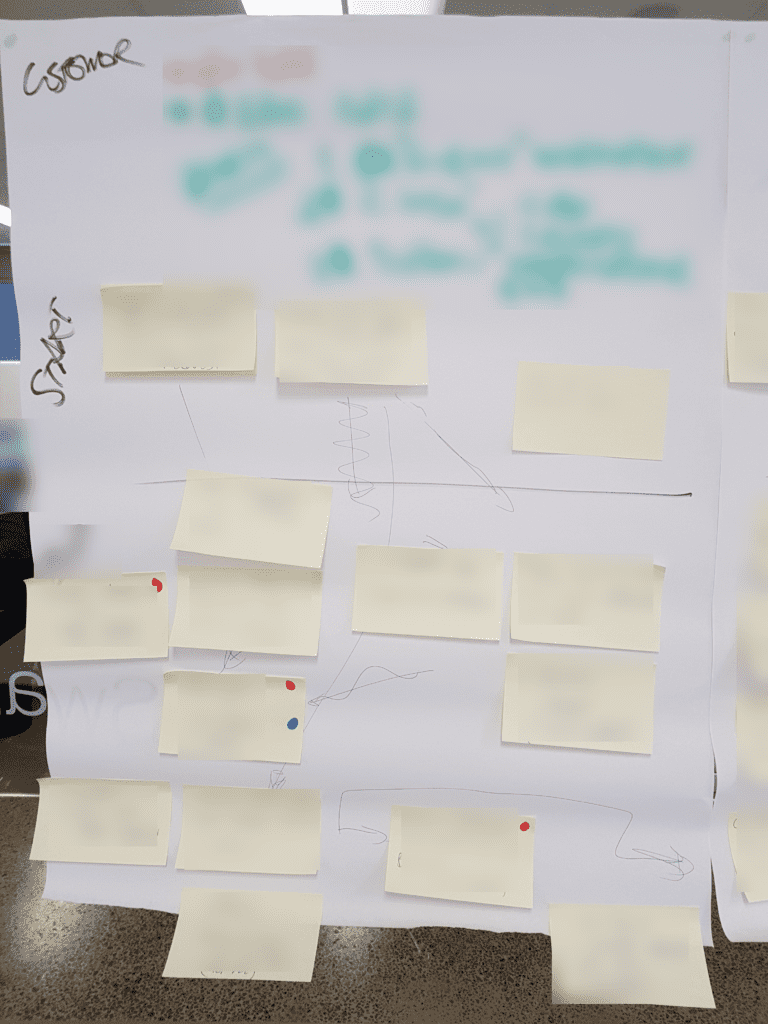
In this context the Customer section is where touchpoints initiated by the customer are placed (e.g. inbound service request) and Company is where touchpoints initiated by the Company are placed (e.g. send welcome pack)
When attendees finish writing down their touchpoints, have them start to place them on the touchpoint map where they think they should go. Encourage people to move the touchpoints around to get the order correct. Also have them throw away any duplicate touchpoint notes which are bound to have been created in the process.
When everyone has placed their touchpoints on the map, start at the top left of the map (the first contact) and interactively work through the entire map to create an accurate view of the customer journey.
Typically this works best if the facilitator stands at the map and simply asks “after this Touchpoint what happens”. New post-it notes will have to be made as some touchpoints will have been forgotten and there will often be disagreements between attendees on exactly what happens. However, when consensus is reached a valid customer journey map will have been created.

